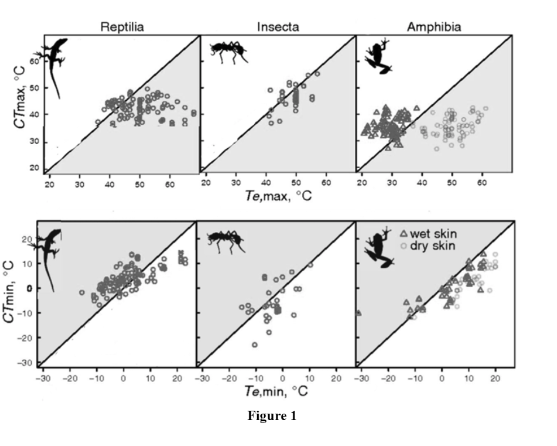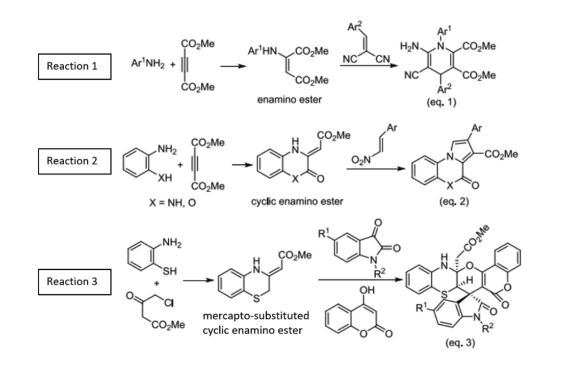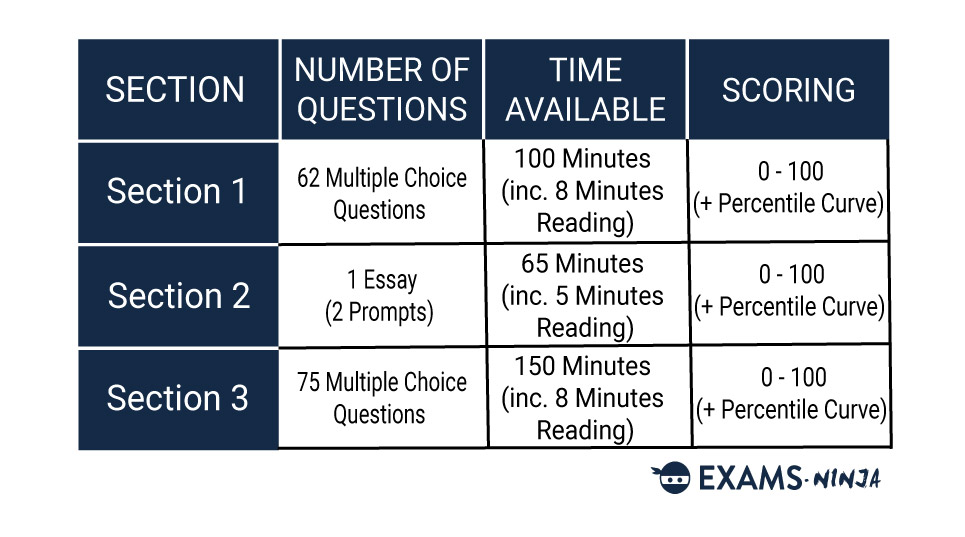GAMSAT SECTION 3
The Definitive Guide to GAMSAT UK Section 3 2025
Written by: Matt Amalfitano-Stroud
For some Section 3 of the GAMSAT (Reasoning in Biological and Physical Sciences) may be the most challenging. It’s a test of your pure scientific ability at a fairly high level, so effective revision and preparation is essential. This guide will cover everything you can expect to find in this section and how you can make the most of your preparation time to ensure you get top marks!
1/4
THE BASICS OF GAMSAT SECTION 3
To start things off, let’s get a bird’s-eye view of the basic info you need to know when approaching GAMSAT Section 3.


Before we take a look at the content of Section 3, let’s quickly review the basic format and requirements for the section.
Section 3, the final section of the Graduate Medical School Admissions Test (GAMSAT) is the biggest, longest and, for some, hardest part of the test. It’s not only a test of the skills you used in the previous sections – it’s also a test of your science knowledge and ability to apply your general thinking skills in a scientific context.
How does GAMSAT Section 3 Work?
Like Section 1, Section 3 is purely a Multiple-Choice quiz that provides questions based on a variety of prompts and stimuli from the three major sciences: Biology, Chemistry and Physics.
In this section, you’ll need to complete 75 questions in 150 minutes (including 8 minutes to read all of the provided stimuli). All questions have 4 answer options and each stimulant will have 2 – 5 questions attached to them.
Unlike Section 1, this section has 3 specific question categories – the three sciences. Biology and Chemistry are prioritised in this test due to their greater relevance to Medicine. Below you can see the weighting of questions between the three sciences:
- Biology - 40%
- Chemistry - 40%
- Physics - 20%
While preparing for each of these topics is important, it’s helpful to know that Physics will have half as many questions as the other two sciences. If Physics is your weakest science, you can breathe a sigh of relief!
How Is GAMSAT Section 3 Scored
Scoring for Section 3 of the GAMSAT is almost identical to Section 1. Your correct answers will first be counted up, making your raw marks. There’s no negative marking here so you won’t be penalised for incorrect answers.
After that, you’re GAMSAT Score for Section 3 will be scaled and calculated using Item Response Theory (IRT), just like Section 1. The scaling is unique for each Section, so how your results are calculated will differ from one another. However, you’ll still be given a final score between 0 and 10 (Learn more about this in our GAMSAT Scoring Guide).
The main difference between Section 3 and the other sections is how the results are used when calculating the overall GAMSAT Score, as the sections of the GAMSAT are weighed 50/50 between scientific and non-scientific sections. Since there’s only one scientific section in the test (Section 3), your marks are worth double in order to fairly balance the two sides of the exam. Therefore, the final calculation for your overall score looks like this:
Overall Score = (1 × Section I + 1 × Section II + 2 × Section III) ÷ 4
It can be argued that Section 3 is the most important section of the GAMSAT, although it is still important to put your full effort into all three parts of the test. Here’s what the GAMSAT looks like as a whole:
Exams.Ninja Tip
No negative marking means no question should be left unanswered. If you’re struggling or have no idea how to solve a problem, simply guess it, move on and go back to it at the end if you have time. With only four answer options, you’re still giving yourself a 25% chance of getting the mark compared to a 0% chance by leaving it blank.
Revise and practice everything you need to know in Section 3 with GAMSAT.Ninja
GAMSAT.Ninja features a full suite of helpful tutorials, 600+ Section 3 Practice Questions and 6 full Mock Exams. Create your free account now to start your GAMSAT prep today!
2/4
WHAT TO EXPECT FROM GAMSAT SECTION 3
Section 3 is the most “subject-knowledge” heavy of the three, so it’s important that you know everything that will be covered and what kind of questions will be featured. Let’s take a look!
What Questions Are In GAMSAT Section 3?
While not as varied as Section 1, there is a wide selection of question types in Section 3. The structure of this section is pretty much the same as Section 1, as you’ll be provided with a series of stimuli to analyse. The types of stimuli available are far more limited, with only 3 general formats included:
- Written Passages
- Mathematical Formulas
- Visual Elements (Diagrams, Tables and Graphs)
Exams.Ninja Tip
Many questions in Section 3 will mix these mediums, having multiple within a stimulant. As well as this, some questions will introduce more unique elements like diagrams and tables. Basically, be prepared to see a lot of all of these elements throughout the 75 questions!
You’ll be able to use the first eight minutes of this Section to read through all the stimuli included, so be sure to utilise this time to its maximum potential. After that, you will be able to begin working through the questions. While all questions are multiple-choice, the types of questions you can be asked here are pretty varied. Here are some examples of what you can expect to be tested on:
GAMSAT Section 3 Question Types
- Identify facts or elements within the stimulant.
- Recall and understand certain scientific concepts in the context of the stimulant.
- Find the solution to a problem.
- Analyse and interpret data.
- Compare elements of the stimulant (e.g. data)
- Extrapolation/interpolation.
- Identify appropriate hypotheses based on the stimulant.
- Catagorise information and data.
- Evaluate evidence given within the stimulant and identify errors.
- Solve mathematical or scientific equations.
- Highlight relationships between elements of the stimulant.
These are all fairly common tasks in science-based examinations, so experienced science students should slip into the GAMSAT style of testing quickly and painlessly.
However, while scientific knowledge is important in this section, it’s more of a test of your problem-solving and critical-thinking skills than anything else. You’ll need a good level of scientific knowledge to get a good mark, but you will also need to be able to use general thinking skills in a scientific context, which is something that is harder to revise for.
Speaking of scientific knowledge though, let’s see what you’re going to need to revise when preparing for the GAMSAT.
Required Knowledge For GAMSAT Section 3
Between the three core sciences, there are a lot of topics that you will need to have a good understanding of, as well as a firm grip on various mathematical concepts that will help you through the questions.
As we mentioned before, Biology and Chemistry are the most important topics here, so the required knowledge for these is at a somewhat higher level, generally pulling from concepts you would find in your first year of university. Physics is a little bit simpler, mainly focussing on knowledge learnt at Year 12 or equivalent.
Here are some of the general topics that you should expect to see on your test:
GAMSAT Section 3 Required Knowledge
GAMSAT Biology Required Knowledge
- Cells and Organisms
- Nutrition
- Respiration
- Genetics
- Biological Transport Systems
- Enzymes
- Reproduction
- Meiosis/Mitosis
- Homeostasis
- Water Potential
GAMSAT Chemistry Required Knowledge
- Chemical Bonding
- Molecules
- Periodic Table
- Acids/Bases
- Gases
- Solutions
- Oxidation/Reduction
- Equilibrium
- Isomers
- Kinetics
- Energetics
GAMSAT Physics Required Knowledge
- Forces
- Mechanics
- Energy
- Magnetic Fields
- Electricity
- Radiation/Decay
- Vectors/Kinematics
- Waves
- Elasticity
- Sound
- Lenses
GAMSAT Mathematics Required Knowledge
- Arithmetical Operations
- Multiples
- Metric Units
- Geometry
- Trigonometry
- Fractions/Percentages
- Rearranging Equations
Nothing here should be out of the ordinary if you have experience with science assessments, and you should hopefully be well-versed in all of these topics. However, the GAMSAT is also designed to be approachable for applicants without a significant amount of experience in science.
Sitting the GAMSAT Without a Scientific Background
Not every medical applicant is experienced or highly skilled in science, especially at graduate-level. Graduate medicine courses usually allow applicants from a variety of disciplines, and not all of those will be related to the core sciences, so the GAMSAT has been designed with this in mind.
The first thing to clarify is that you aren’t going to do well in the test without learning the required knowledge beforehand. They’re hard questions, but applicants who understand the concepts and can use broad thinking skills should be able to succeed. With the right amount of practice, the latter can be built up by anyone, regardless of background, so the issue will be the required knowledge.
When we say applicants with a non-science background, this typically means those who did not study science for their bachelor’s degree, so they will still likely have experience with at least one form of science during the A-Level/equivalents. If you’re applying for medicine without some level A-Level science ability, your chances of success may be far slimmer than most as science A-Levels are usually a requirement for entry.
However, if you do have this experience, you’re already off to a good start. Your knowledge may be a bit rusty, so you’ll need to take the time to revise what you previously learned. Once you’ve gotten the fundamentals out of the way, you’ll need to take a deeper dive into Biology and Chemistry, as the required knowledge for these subjects is comparable to first-year university curriculums.
You’re not going to need to go far beyond the core of what is taught at this level, however. Remember that the GAMSAT is testing your critical thinking and problem-solving more than your encyclopedic knowledge of all things science. If what you’re learning interests you, it will certainly help to dig deeper but don’t feel obliged to learn every obscure fact you find.
As to how you can learn this knowledge, there are a few options:
- Textbooks
- Courses (either general science or GAMSAT specific)
- Science question banks with worked solutions
- Online tutorials (text or video based)
- Study groups
Any of these resources should get you on the right track and ready to take on proper GAMSAT practice questions and mock exams.
As you continue with your GAMSAT revision and practice, you’ll naturally become far more familiar with all of the different topics and question types in the test. With that in mind, let’s now see how you can effectively prepare for Section 3!
3/4
HOW TO PREPARE FOR GAMSAT SECTION 3
Section 3 will likely require the most preparation in order to familiarise yourself with both the required knowledge and question types. These tips will help you make the most of your time and resources to become a GAMSAT master!
1. Gather Your Resources
Section 3 is the only part of the GAMSAT that can be traditionally revised to some degree. You’re going to need to brush up on your core scientific knowledge, so you’ll need study materials to work with. If you have any textbooks left from your previous studies, this should give you a huge head start, but you may not want to rely solely on them.
If you want to focus specifically on what the GAMSAT covers, then you will be able to find a wide variety of GAMSAT guides, tutorials, videos and more! All of these materials will provide you with the essential knowledge you’ll need for the test, as well as offer strategies for actually approaching the questions.
Beyond revision materials though, you’re also going to need practice questions. Many GAMSAT materials will include both revision materials and practice questions (such as our own GAMSAT.Ninja Preparation Platform), so seek out support providers that offer everything you need to prepare.
2. Structure Your Study
No matter what admissions test we’re discussing, we always recommend creating a preparation plan. Having a timetable that offers structured study and practice sessions has numerous benefits, including organisation and increased motivation to power through your work.
The GAMSAT is, of course, no different! One of the most important elements of a GAMSAT preparation plan is outlining how you’ll split your time between the three sections. Typically, you should spend the most time on the section you find hardest, and the same is true here.
However, it’s important to remember that Section 3 holds the most weight out of the three individual sections. It’s also the longest, has the most questions and the most required knowledge. So even if you feel somewhat confident with science in general, we suggest that you spend more time than you may feel you need prepping for Section 3, as it just might catch you off guard.
3. Practice Makes Perfect
Learning the required knowledge is important, but it’s how you apply that knowledge to the various question types of the GAMSAT that is truly vital. There’s only one way to properly get a feel for the GAMSAT questions – practice!
GAMSAT question banks are the way to go for GAMSAT practice materials, but it will likely require an investment to get a proper experience from them. In most cases, it is 100% worth it (as long as it’s priced reasonably of course), so have a look around and see what options stand out to you. If you want to stick with official practice materials, ACER (the GAMSAT operators) have plenty available for a fee.
One option for free practice materials is to utilise past papers from similar scientific exams. While the questions won’t be one-to-one, they still offer lots of practice questions to sharpen your skills. Past papers from the BMAT, NSAA and PAT are all good options to explore.
4. Test Yourself With Mocks
The GAMSAT’s a beefy test as it lasts over 5 hours, making it quite a significant time commitment. Nevertheless, we strongly recommend attempting a mock exam, with the appropriate exam conditions, at least once.
While working through practice questions can be beneficial, it’s easy to focus on accuracy and overlook the time limits that you’ll be restricted by in the real thing. It’s crucial to understand how much you can accomplish within said time limits and assess your ability to perform under pressure. Considering this, mock exams are the only way to authentically simulate this experience.
Section 3 can be practised by itself if need be, as can the other sections. Even still, you’ll need to set aside the full 150 minutes to give yourself the most accurate representation of the test.
If you’re keen to learn more tips and tricks for preparation, check out our GAMSAT Preparation Guide. First, though, let’s get more closely acquainted with the Section 3 GAMSAT questions!
Access everything you need to succeed in Section 3 with GAMSAT.Ninja
With our comprehensive tutorials, 600+ Section 3 practice questions and 6 mock exams, all created by GAMSAT experts, you will have everything you need to get top marks on the test with GAMSAT.Ninja! Sign up today for free to get started.
4/4
GAMSAT SECTION 3 PRACTICE QUESTIONS
With a good understanding of the requirements and question types, it’s now time to try out some actual Section 3 practice questions!
GAMSAT Section 3 Biology Practice Question 1
Heart attack, also known as acute myocardial infarction (AMI), is one of the leading causes of death in the developed world. The prevalence of the disease approaches three million people worldwide, with more than one million deaths in the United States annually. The cause of AMI is decreased coronary blood flow, where the available oxygen supply cannot meet oxygen demand, resulting in cardiac ischemia.
Creatine kinase (CK) is an enzyme found in the heart, brain, skeletal muscle, and other tissues. Increased amounts of CK are released into the blood when there is muscle damage. There are three different isoenzymes of creatine kinase specific for each tissue. CKMM is found in skeletal muscle, CKMB is found in cardiac muscle, CKBB is found in brain tissue. Instead of measuring absolute levels of serum CK, sometimes the CK index (%CK) is measured, as is shown in the formula below.
%CKMB = (CKMB)/(Total CK) * 100
Which of the following would not be observed if a patient suffered an injury to the chest resulting in skeletal and cardiac muscle damage?
A) Large elevation in %CKMB.
B) Slight elevation in %CKMB.
C) Elevated CKMM.
D) Elevated CKMB.
The correct answer is A.
As there is both cardiac and skeletal muscle damage, both CKMB and CKMM are going to elevate. This rules out C and D as the question asks for the incorrect option. Looking at the % CKMB equation, both the numerator (CKMB) and the denominator (Total CK, which includes CKMM) are going to increase. As a result, the effects would cancel and , any changes in %CKMB would be minor. Hence B is incorrect. Large elevations in %CKMB is unlikely, so Option A is correct.
GAMSAT Section 3 Biology Practice Question 2
Predicting the organismal responses to climate change requires an understanding of the physiological, behavioural, ecological and evolutionary factors that constrain where different species can live. The maximum thermal safety margin measures the difference between the physiological heat tolerance of a species (CTmax) to the maximum operative temperature (Te,max), which estimates an ectotherm body temperature. Analysis of the thermal safety margin provides insight into the physiological capability of the ectotherm to deal with the temperature that it regularly experiences. Conversely, the minimum thermal safety margin measures the difference between the cold tolerance of a species (CTmin) to the minimum operative temperature (Te,min). Figure 1 is a phase diagram of heat and cold tolerance limits and maximum operative body temperature for reptiles, insects and amphibians.
*Note for amphibians: wet skins are marked by ∆ and dry skins are marked by ○.
*Refugia relates to the access of shelter to survive.


A positive thermal safety margin indicates that,
A) Species must rely on access to refugia to survive.
B) Species must rely on behavioural response to survive.
C) Species can rely on physiological response to survive.
D) Species must rely on changes in environmental temperature to survive.
The correct answer is C.
Thermal safety margin is defined as “the difference between the physiological heat tolerance of a species (CTmax) to the maximum operative temperature (Te,max), which estimates an ectotherm body temperature. Analysis of the thermal safety margin provides insight into the physiological capability of the ectotherm to deal with the temperature that it regularly experiences.”
Therefore a positive thermal safety margin indicates that CTmax > Te,max or that the physiological thermal tolerance of a species is greater than the operative temperature. This means that the physiological thermoregulatory mechanisms of the species are able to handle the temperature that it regularly experiences.
Not A, B or D because they all state that the species require behavioural thermoregulatory methods (because physiologically they cannot withstand the operative temperature). This is the direct opposite to what positive thermal safety margin is and hence are incorrect answers.
GAMSAT Section 3 Chemistry Practice Question 1
Antibacterial natural products have traditionally provided a valuable and accessible start point for drug discovery. Tetramate-containing systems are natural products that may exhibit wide-ranging antibacterial activity coupled with low levels of toxicity. Cysteine derived tetramate analogues are unstable compounds; however if heterocyclic rings are added, the decrease in lipophilicity and increase in aqueous solubility makes the compound more stable.


Figure 1: Synthesis of tetramate analogues from L-cysteine with heterocyclic rings
Which reagents are additionally present in order to complete step (a)?
A) R1
B) R2C3H4O
C) R1CHO
D) R2
The correct answer is C.
Step (a) leads to the addition of R1 as well as an extra carbon. As such the substrate that is not shown must contain both of these and no extra carbons or R groups. This is satisfied by option C – R1CHO.
Not A Since it is missing the extra carbon.
Not B R2 is not added in step (a) and more than 1 carbon is present in this option making it incorrect.
Not D R2 is not the added substrate in step (a).
GAMSAT Section 3 Chemistry Practice Question 2
β-Enamino esters have shown versatile reactivity of both nucleophilic enamine and electrophilic enone moieties. Many elegant multicomponent reactions have been developed by employing reactive β-enamino esters as the key substrates for construction of various nitrogen-containing heterocycles.


Figure 1. β-enamino ester reaction
What type of reaction is reaction 3?
A) Annulation.
B) Substitution.
C) Dehydration.
D) Elimination
The correct answer is A.
An annulation reaction is one which results in the construction of a new ring onto a compound. All 3 reactions result in a new ring being added, thus all of them are annulation reactions. Even if you were not aware of this definition, the other options are incorrect and A could still be deduced.
Not C Dehydration reaction result in the formation of H2O, which reaction 3 does not.
Not B Substitution reaction is a chemical reaction during which one functional group in a chemical compound is replaced by another functional group, reaction 3 results in the addition of two new structures and thus it is not a substitution reaction.
Not D An elimination reaction is a type of organic reaction in which two substituents are removed from a molecule in either one or two-step mechanism, whereas reaction 3 has the addition of new structures making D incorrect.
GAMSAT Section 3 Physics Practice Question 1
The ring and linker building block combination is a scalable concept for designing a family of covalently-bound materials in which single atom metal sites are dispersed with a high degree of spatial and chemical control. This option is also versatile as it allows for diverse combinations as steps progress. Figure 1 shows the ring and linker method of polymerisation:


Figure 1: Polymerisation Ring & Linker Method
The process in Figure 1 begins with 1 vertex with 4 open faces onto which edges are added.
A polymerisation process is being conducted with the following vertex and edges in Figure 2:


Which of the following is most likely to decide the number of open faces on the vertex used?
A) Number of bonds in conjugated carbons.
B) Number of NH2 bonds.
C) Number of N2 bonds.
D) The type of edges being used.
The correct answer is B.
The vertex given has 4 NH2 groups in the periphery, which is inferred to be the open faces. One logic to reach this is that it is unlikely to be a carbon that is the open face since each vertex will then have far more than 4 open faces. Also, the N bonds that are located more centrally do not have NH2 bonds and thus are not open faces, since we know for a fact that each vertex has a maximum of 4 open faces. Finally, we are given 4 example edges in Figure 2. We therefore need to see from the vertex image where there are four repeating units in the molecule, in this case, there are indeed 4 -NH2 endings. All of these reasonings make B correct.
A is incorrect since there are far more than 4 conjugated carbons in the vertex structure.
C is incorrect as there are no N2 present in the structure given.
D is incorrect since the question refers to the vertex, and the type of edge used will not impact the structure of a vertex.
GAMSAT Section 3 Physics Practice Question 2
A new reactor is assembled to calculate the sensitivity of certain ions to radiation therapy. The setup consists of two rings stacked together, with the upper ring having a ring electrode and the lower ring having a disc electrode. Depending on the amount of mass that deposits on the rings, the sensitivity of the ions would be determined.


where Δf is the resonance frequency shift due to a surface mass loading; m is the electrodeposited Cu mass in grams, Q, F (F = 96485C/mol), M (M = 63.5 g/mol) and z are the total electric charge passing through the cell in coulombs, the Faraday constant, the molar mass of copper and the valency number of the Cu ions (i.e. z = 2), respectively.
What is the total electric charge passing through the cell when the ion used its Cl?
A) 6 C
B) MxF/m
C) 3 C
D) mxF/M
The correct answer is D.
From the options given, we can see that the only variable that has disappeared from the mass equation given
(m = (QM)/(zF)) is z. The stem mentions that z is the valency number, which for Chlorine’s case will be 1.
Substituting 1 for z gives us:
m = (QM)/(1xF)
Isolating for Q (the total electric charge passing through the cell) gives us:
Q = (mx)/(FM)
This makes answer D correct. Always look at the options to see which variable has disappeared, then connect it to the new parameters to find out what the value of it must have been. B is incorrect and could be reached with incorrect algebraic manipulations.
Not A or C since these options give actual values for the charge, this is impossible to calculate without knowing m, which is found experimentally.
That’s all we have for Section 3! Your next steps should be to start reviewing the required knowledge and checking out some more practice questions to get a feel for them. If you need to go back a step and learn more about the GAMSAT as a whole, check out our Definitive GAMSAT Guide, or if you want to take your preparation to the next level, sign up to GAMSAT.Ninja for free now!
Upgrade your GAMSAT prep with GAMSAT.Ninja!
Our GAMSAT Preparation Platform features everything you need to reach GAMSAT success, all within our three unique components.
Training Temple- Learn all the required knowledge for Section 3 and expert techniques for the whole test with our comprehensive suite of tutorials.
Practice Dojo- Work through 1,000+ GAMSAT questions, including 200+ Section 3 questions, all with worked solutions and performance tracking.
Exam Arena- Prepare for the real GAMSAT experience with 6 full Mock Exams and mini mocks that feature realistic exam conditions and worked solutions.
Start your free demo now to begin your journey to GAMSAT success!


